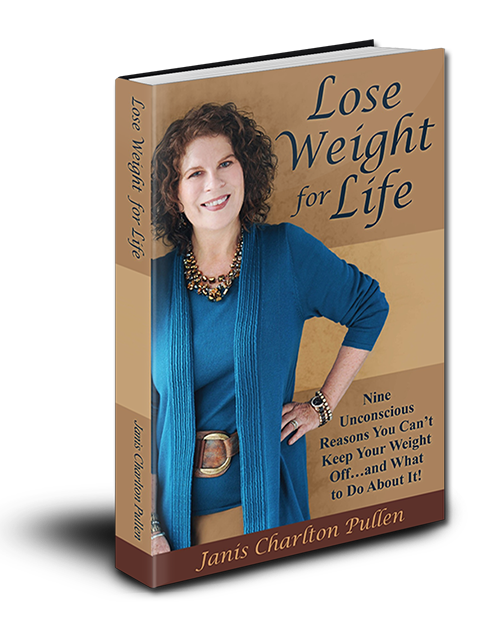[Guest Blogger] Remember to Make Time for Fun
 At the end of the year, I usually reflect back on what I accomplished, whether I’m happy, and where I want to be next year. For me, 2014 was a very busy year filled with travel commitments, publishing deadlines, and starting a new business. It felt like I was working seven days a week – weekends, evenings, mornings, and afternoons. I enjoy my work very much and really wanted to reach my goals by year end, but at what cost? If we end the year feeling burned out then what good are we?
At the end of the year, I usually reflect back on what I accomplished, whether I’m happy, and where I want to be next year. For me, 2014 was a very busy year filled with travel commitments, publishing deadlines, and starting a new business. It felt like I was working seven days a week – weekends, evenings, mornings, and afternoons. I enjoy my work very much and really wanted to reach my goals by year end, but at what cost? If we end the year feeling burned out then what good are we?
When you’re self-employed, you don’t have the same structure in your day as someone who works a conventional 9 to 5 job. Carving out time for fun requires discipline. It begins by establishing Time Rules. This is about the quality of your choices and your commitment to them. Plan ‘work’ days, ‘buffer’ days, and ‘free’ days into your schedule. Work days are for focusing all of your energy into what you do best – your main job. Buffer days are for loose ends like dealing with tech bugs, social media updating, paying bills, making appointments, and returning emails. Free days are for experiencing pure fun like holidays, vacations, party celebrations, sleeping in, nesting at home, trying new recipes, and shopping without a list. On free days, you simply unplug and have fun. That means no technology. When you make a commitment in your calendar to have free days you allow yourself to be free to experience what is.
Here’s a list of fun things to try in 2015:
- Learn to play a musical instrument like the piano, the guitar or maybe even the trombone.
- Read an old classic such as Little Women, Gone with the Wind, or The Grapes of Wrath.
- Go mountain climbing, hiking or take a long forest walk.
- Attend an open mic night at the local comedy club and meet new people.
- Put on crazy hats, big glasses and feather masks. Then crowd your family into one of those mall photo booths for a fun picture you’ll always treasure.
- Gather a few friends together and play soccer, basketball, bocce ball, or miniature golf.
- Learn a new language. Then plan a trip to practice your new skill in a foreign country.
- Instead of walking the neighborhood, try skipping and galloping. You may get some funny looks, but you can chuckle too while burning major calories!
- Go roller skating and bring back this wonderful childhood memory!
- Try a new look ~ cut your hair, color your hair, or get hair extensions. Donate your old clothes and then treat yourself to some colorful, hip, modern clothes that will make you feel young again.
- Take a train ride to a town that you’ve never visited. When you arrive, explore the village and see what you can find that’s fun and new.
- Try a new sport like kayaking, surfing, sailing, skiing, paragliding or even raising honey-bees.
- Go camping! Take a portable stove, sleeping bag, and a small tent and leave technology behind.
Whatever you decide to do in 2015, be sure to carve out time in your schedule to have fun, to laugh a hearty laugh, or just to be silly every once in a while.
Happy New Year!
About Gale
 Gale O’Brien is a cancer survivor, motivational speaker and the award-winning author of Transformation: Creating an Exceptional Life in the Face of Cancer. Transform your life each month with timely tips on food, health, fitness, relationships, travel, and art. Subscribe to the Transformation monthly newsletter or order the book by visiting: www.galeobrien.com.
Gale O’Brien is a cancer survivor, motivational speaker and the award-winning author of Transformation: Creating an Exceptional Life in the Face of Cancer. Transform your life each month with timely tips on food, health, fitness, relationships, travel, and art. Subscribe to the Transformation monthly newsletter or order the book by visiting: www.galeobrien.com.
[Guest Blogger] MARBLE CHEESECAKE: A Holiday Recipe You Can Say Yes To!
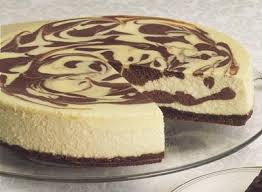 Cheesecake is a beloved dessert around the world. While many assume that it has its origins in New York, it actually dates back to ancient Greece. The first “cheese cake” may have been created on the Greek island of Samos. Physical anthropologists excavated cheese molds there which were dated circa 2,000 B.C. In Greece, cheesecake was considered to be a good source of energy, and there is evidence that it was served to athletes during the first Olympic games in 776 B.C. Greek brides and grooms were also known to use cheesecake as a wedding cake.
Cheesecake is a beloved dessert around the world. While many assume that it has its origins in New York, it actually dates back to ancient Greece. The first “cheese cake” may have been created on the Greek island of Samos. Physical anthropologists excavated cheese molds there which were dated circa 2,000 B.C. In Greece, cheesecake was considered to be a good source of energy, and there is evidence that it was served to athletes during the first Olympic games in 776 B.C. Greek brides and grooms were also known to use cheesecake as a wedding cake.
It was not until the 18th century when Europeans began to use beaten eggs instead of yeast to make their breads and cakes rise. Removing the overpowering yeast flavor made cheesecake taste more like a dessert treat. When Europeans immigrated to America, some brought their cheesecake recipes along. Cream cheese was an American addition to the cake, and it has since become a staple ingredient in the United States. In 1872, a New York dairy farmer was attempting to replicate the French cheese Neufchatel. Instead, he accidentally discovered a process which resulted in the creation of cream cheese. Three years later, cream cheese was packaged in foil and distributed to local stores under the Philadelphia Cream Cheese brand.
New York is not the only place in America that puts its own spin on cheesecakes. In Chicago, sour cream is added to the recipe to keep it creamy. Meanwhile, Philadelphia cheese-cake is known for being lighter and creamier than New York style cheesecake and it can be served with fruit or chocolate toppings. In St. Louis, they enjoy a gooey butter cake, which has an additional layer of cake topping on the cheesecake filling. Each region of the world also has its own take on the best way to make the dessert. Italians use ricotta cheese, while the Greeks use feta. Germans prefer cottage cheese, while the Japanese use a combination of cornstarch and egg whites.*
Below is my spin on the traditional marble cheesecake. I’ve substituted stevia baking blend for the sugar and created a melt-in-your-mouth dessert experience with a lot less calories. Make this delicious cake for your upcoming holiday parties!
For the crust:
2 cups graham cracker crumbs, crushed
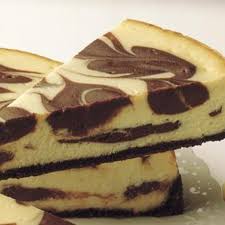 1/2 cup cocoa
1/2 cup cocoa
1/3 cup butter, melted
1/4 cup stevia
For the cheesecake:
3 (8 ounce) packages cream cheese, softened
1/2 cup stevia, divided
1/2 cup sour cream
2 1/2 teaspoons vanilla extract, divided
3 tablespoons all-purpose flour
3 large eggs
1/4 cup cocoa
1 tablespoon vegetable oil
Preheat oven to 350 degrees. Prepare chocolate crumb crust: Combine graham cracker crumbs with stevia, cocoa, and melted butter. Press mixture into the bottom of 10 inch springform pan. Bake 8 minutes. Cool completely.
Increase oven temperature to 450 degrees. Prepare the cheesecake: Beat the cream cheese, 1/4 cup, plus 2 tablespoons stevia, sour cream and 2 teaspoons of vanilla extract in a large mixing bowl. Gradually add flour, beat until just blended. Add eggs, one at a time, beat well. Set aside.
In a separate bowl, combine cocoa and 2 tablespoons stevia. Then add oil, remaining 1/2 teaspoon vanilla extract and 1 1/2 cups of cream cheese mixture from above. Stir well. Next, alternately spoon plain and chocolate batters over baked chocolate crust, ending with the chocolate batter on top; gently swirl a knife through the batters for a marbled effect.
Bake the cheesecake for 10 minutes at 450 degrees. Without opening the oven door, re-duce oven temperature to 250 degrees and continue baking 30 more minutes. Turn oven off. Without opening the oven door, leave cheesecake in the oven for 30 more minutes.
Remove from oven. Immediately loosen cheesecake from side of pan with a knife. Cool to room temperature. Refrigerate several hours or overnight. Remove the side of pan. Slice and serve. Cover and refrigerate leftover cheesecake. Yields: 10 to 12 servings.
As a side note, make sure to buy the stevia baking blend. It can be found under the brand name Truvia in the grocery store. Enjoy!
About Gale
 Gale O’Brien is a cancer survivor, motivational speaker and the award-winning author of Transformation: Creating an Exceptional Life in the Face of Cancer. Transform your life each month with timely tips on food, health, fitness, relationships, travel, and art. Subscribe to the Transformation monthly newsletter or order the book by visiting: www.galeobrien.com.
Gale O’Brien is a cancer survivor, motivational speaker and the award-winning author of Transformation: Creating an Exceptional Life in the Face of Cancer. Transform your life each month with timely tips on food, health, fitness, relationships, travel, and art. Subscribe to the Transformation monthly newsletter or order the book by visiting: www.galeobrien.com.
*Cheesecake.com – An Epic Cheesecake Experience, “The Rich History of Our Dessert,” (accessed November 23, 2014).
[Guest Blogger] Why Are Superfoods Important?
Scientists have discover that certain foods, superfoods, are rich in essential fatty acids, antioxidants or fiber which are vital to building a healthy body and a strong immune system. These foods have also been proven to lower total cholesterol, lower blood pressure, help protect against heart disease and cancer, help regulate blood sugar levels and metabolism and burn body fat.
The process of converting your diet over from one of processed foods to one that contains mostly superfoods can be daunting. As long as you are clear in your head that you are committed to giving up your old ways of eating, then you will succeed by putting imaginary blinders on your eyes whenever you see junk food. Instead, your eyes will twinkle with delight when they see heaps of beautiful, farm fresh fruits and vegetables.
Below is the list of 10 superfood groups and their benefits:
-
Olive Oil
Regularly consumption of olive oil can help lower total blood cholesterol, fights against diabetes, osteoporosis, and cancer, and decreases blood pressure levels. For those with dry skin, it’s an excellent way to cleanse your skin, as well. -
Garlic
Garlic lowers total cholesterol and blood pressure, lessening the risk of heart disease. It also destroys infection-causing viruses and bacteria. -
Red and purple foods
Blueberries, blackberries, cranberries, grapes, pomegranates, red cabbage, red peppers, strawberries, and tomatoes. These amazing foods contain antioxidants that fight cancer, reduce blood pressure, and lower bad cholesterol. -
Beans and lentils
Beans and lentils, low in fat, calories and sodium but high in dietary fiber, are an excellent source of protein. -
Orange foods
Apricots, cantaloupe, carrots, mangos, oranges, persimmons, pumpkin, sweet potatoes, and tangerines provide fiber and may control blood pressure and normalize heart function. They protect your vision, encourage a good mood, fight cancer and keep your bones strong. -
Green foods
Broccoli, brussel sprouts, green beans, green cabbage, green peppers, edamame, kale, parsley, spinach, and spirulina. Green foods have beneficial effects on cholesterol, blood pressure, immune response and cancer prevention. -
Hot peppers – sweet bell or hot chilies
Chilies are high in antioxidant carotenes and flavonoids, and contain about twice the amount of vitamin C found in citrus fruits. Hot peppers aid with digestion, an improved immune system, and better blood circulation and digestion. -
Nuts and seeds
Nuts and seeds dramatically decrease your risk of cancer, heart disease and diabetes, and reduce the visible signs of aging like wrinkles and sagging skin. -
Sprouts
Sprouts are a “living food” that continues to produce nutrients after being harvested. They are the most enzyme-rich food and they have a higher nutritional content than any other food. -
Yogurt and kefir
Probiotic foods are primarily yogurt and kefir. They increased bone strength, lowered cholesterol, create a stronger immune system, and improve digestion.
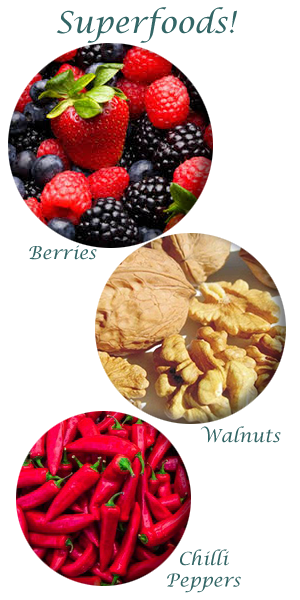
Delicious recipes containing superfoods, such as , and , can be found on The Healing Blog: Creating an Exceptional Life.
 Gale O’Brien is a cancer survivor, motivational speaker and the award-winning author of Transformation: Creating an Exceptional Life in the Face of Cancer. Transform your life each month with timely tips on food, health, fitness, work, travel, and art. Subscribe to the Transformation monthly newsletter or order the book by visiting: .
Gale O’Brien is a cancer survivor, motivational speaker and the award-winning author of Transformation: Creating an Exceptional Life in the Face of Cancer. Transform your life each month with timely tips on food, health, fitness, work, travel, and art. Subscribe to the Transformation monthly newsletter or order the book by visiting: .
Stevia: A Better Alternative Than Sugar – by Gale O’Brien
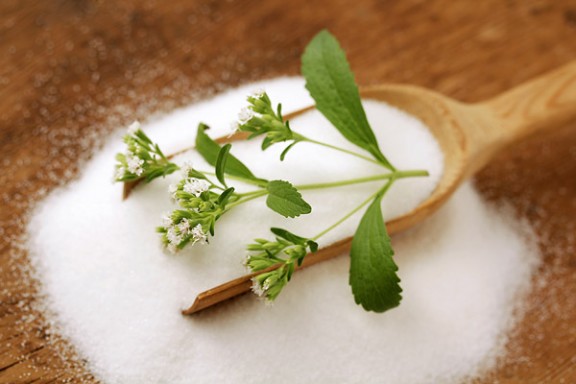 Have you spent a lifetime with a sweet tooth? Have you carried an extra thirty pounds around your waist, hips and thighs for most of your adult life? Trying every diet available, most people never seem to get a handle on their sugar addiction until they are diagnosed with a serious disease such as diabetes or cancer. When they begin to understand sugar’s role in regards to their health, they will see why stevia is a better alternative.
Have you spent a lifetime with a sweet tooth? Have you carried an extra thirty pounds around your waist, hips and thighs for most of your adult life? Trying every diet available, most people never seem to get a handle on their sugar addiction until they are diagnosed with a serious disease such as diabetes or cancer. When they begin to understand sugar’s role in regards to their health, they will see why stevia is a better alternative.
SUGAR FACTS
- It depletes your immune system. Consuming sugar can decrease your white blood cells, inhibiting your body’s ability to fight infection, viruses and disease.
- Sugar feeds candida. Candida is an overgrowth of a yeast fungus found in the intestines which can hinder the proper balance of good to bad flora and can spread throughout the body. Candida thrives on refined sugars and simple carbohydrates.
- In addition, refined sugar upsets your blood sugar levels and puts you at risk for diabetes and heart disease.
- Too much sugar increases your cortisol and estrogen hormones putting you at risk for developing breast cancer.
- Sugar is empty calories. It doesn’t contain any vitamins or minerals. Sugar makes you overweight.
- Finally, sugar can make you depressed. At first, sugar can increase serotonin, this is the neurotransmitter in your brain that makes you feel happy and elated. This initial high is followed by a low, a feeling of your energy crashing. Sugar becomes addictive as you crave sugar again wanting to recreate the high.
WHAT IS STEVIA?
- Stevia is of the composite family, related to lettuce, marigold and chicory. It was ‘officially’ discovered in the late nineteenth century by Dr. Moises Santiago. He named the plant Stevia Rebaudiani Bertoni in honor of a Paraguayan chemist name Rebaudi.
- Originally stevia grew wild in the highland region of Northern Paraguay and Southern Brazil. It was later cultivated for use as a sweetener until the introduction of sugar cane by the Spanish and Portuguese. Today stevia is grown around the world from China, Japan and other Asian countries to South America, Europe, India, the Ukraine and even North America.
BENEFITS OF USING STEVIA:
Studies have shown the following benefits from using stevia in one’s diet. These benefits have not been approved or confirmed by the FDA.
- Stevia is alkaline.
- Stevia is a plant based sweetener, unlike artificial sweeteners that contain harmful chemicals.
- Stevia will not affect blood sugar levels (excellent for diabetics).
- It’s a plaque retardant, helping to prevent dental cavities.
- Stevia is non-fermentable and therefore will not act as a food source for yeast. (This is why stevia is great for anyone suffering from Candida.)
- Stevia is particularly useful in the maintenance phase after weight loss.
Stevia is safe for pregnant and nursing woman as well as for people with diabetes and for children. There are no known interactions between stevia and any prescription or over the counter medications. There are no known side effects of consuming stevia and it’s not known to be contraindicated for any medical conditions. Stevia does not contain any gluten so it’s safe for someone on a gluten-free diet.
RECIPES
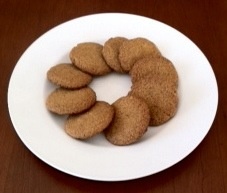 Below are recipes that I’ve created using the stevia baking blend which brings out the sweetness in cookies, pies and cakes while letting go of 75% of the calories. The baking blend contains erythritol, stevia leaf extract, and a small amount of sugar which allows your baked goods to brown in the oven. Click on the recipes below to download and try for yourself.
Below are recipes that I’ve created using the stevia baking blend which brings out the sweetness in cookies, pies and cakes while letting go of 75% of the calories. The baking blend contains erythritol, stevia leaf extract, and a small amount of sugar which allows your baked goods to brown in the oven. Click on the recipes below to download and try for yourself.
- Lemon Pound Cake –
- Chewy Molasses Cookies –
- Apple Pecan Pie –
- Ghirardelli Cacao Cookies –
- Banana Walnut Bread –
Gale O’Brien, has been a client of mine, and is a cancer survivor, motivational speaker, and the author of the award-winning book ‘Transformation: Creating an Exceptional Life in the Face of Cancer’. To subscribe to her monthly newsletter or to order her book, please visit: .
The Truvia Company, LLC, (accessed August 24, 2014).
[OWWL Success Tip] Choose the empowering context of the two
To read about the disempowering and empowering two contexts, click here…

